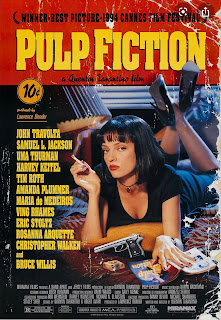The Drama Genre - Research
Genre conventions
content
Drama portrays real, everyday life with realistic settings, characters, and their story lines. It is almost like life itself but enhanced and focused on the intensity of life and people's day to day interactions with the world around them, how they react, and what they take from it.production techniques
The definition of how drama must be produced to be solely categorized as such is slim in the sense that many media critics believe it is too vague and there are so many other genres that can overlap with drama to be considered its own genre. Due to this, a production can only be considered just drama if it also doesn't fit into any other genre. However, because drama focuses on the character's growth and interactions with the world in any form of media, the setting wouldn't be as important at conveying the story because it is the characters who bring it to life. Drama productions typically are about serious topics, such as politics, injustice towards minority groups, equal rights, mental illness, e.t.c. This importance of conveying this genre is through the characters conflicts and emotions through their dialogue and actions.
Institutional conventions
How is genre marketed?
Drama is a very broad term that branches out into many subcategories such as melodrama, crime and legal drama, historical drama, docudrama, psychodrama, and period drama. Since it is such a broad term that overreaches all of these subcategories and many more, the target audience of this genre can vary because of the many different subcategories. That said, a lot of the time the focus is to appeal directly to the female audience but this isn't always the case. For instance, if there is a drama production that involves an oppressed minority group, it's target audience will most likely be that particular group so as to illicit an emotional reaction through it's storyline.
Ex: Pulp Fiction (1994) Quentin Tarantino
Tarantino's film, Pulp Fiction, is the perfect example of a crime drama. It is about the lives of two mob hitmen, a boxer, a gangster and his wife, and a pair of diner bandits and how their stories entangle themselves into a theme of violence and redemption. Greed, for example, can be seen as a common driving force behind actions characters take such as when the two bandits in the diner scene attempt to rob a restaurant while armed so that they gain a large sum of money, or when Mia Wallace (Uma Thurman) finds Vincent Vega's (John Travolta) drugs in the jacket she is wearing and impulsively takes them, leading to Vega finding her overdosing while under his care. Both of these
scenes involve an emotion or character trait, and showcase how the characters behave based on those emotions/traits. Pride is also seen through the repetition of the Bible verse Jules Winnfield ( Samuel L. Jackson) recites throughout the film before completing his jobs as a hitman because it gives his character a sense of fulfillment and adds drama as the audience knows someone will be murdered soon within the scene. Winnfield is usually shot at a low angle for this, indicating his power alongside his all black tuxedo suit that his counterpart, Vega, also wears and shows them as a united, powerful pair.
Ex: Black Swan (2010) Darren Aronofsky
Black Swan is another example of a drama, but this time with the additional thriller subgenre rather than crime. It follows the life of a ballet dancer and her struggle to keep her sanity intact as she tries out and eventually receives the lead role in a production of Tchaikovsky's "Swan Lake". Nina Sayers (Natalie Portman) is the main character in this film. Throughout the plot, we see this idea of perfection driving her to insanity, and eventually killing her as she progressively loses touch with reality at a quickening pace. Towards the end at the point of the climax of the film, Sayers is getting in costume and makeup before the official showing of the play begins. She begins to hallucinate her reflection in the mirror talking negatively towards her which leads to an altercation where Sayers stabs herself in the stomach with a glass mirror shard, thinking she stabbed her perceived attacker. This particular scene captures the essence of the drama genre this film belongs to, as we know that the emotion of anger and the insanity the character has driven herself into to achieve perfection drives her to finally confront these hallucinations. Though it is insinuated that she stabbed herself without knowing she did, the audience isn't fully sure about this fact until the peak of the climax when we see the play coming to an end and blood is staining the front of her white dress rapidly and she eventually falls the ground. Despite this, she seems to be satisfied that she achieved the perfection she was striving for, regardless of the fact that it eventually killed her. Her innate need for perfection drives her to push herself, therefore adhering to the drama genre's production technique by focusing on the character's internal struggle and showing how she behaves or reacts to it.
Extra examples of films in the drama genre:
- Fight Club (1999) David Fincher
- The Shawshank Redemption (1994) Frank Darabont
- Once Upon a Time in Hollywood (2019) Quentin Tarantino
- Raging Bull (1980) Martin Scorsese
- One Flew Over the Cuckoo's Nest (1975) Milos Forman
SOURCES:
Omidpacino. “100 Best Drama Movies.” IMDb, IMDb.com, 1 Sept. 1969, www.imdb.com/list/ls009668711/.
Drama Films - Examples, www.filmsite.org/dramafilms3.html.
“Genre Trends in Global Film Production.” Stephen Follows, 13 Feb. 2018, stephenfollows.com/genre-trends-global-film-production/.


